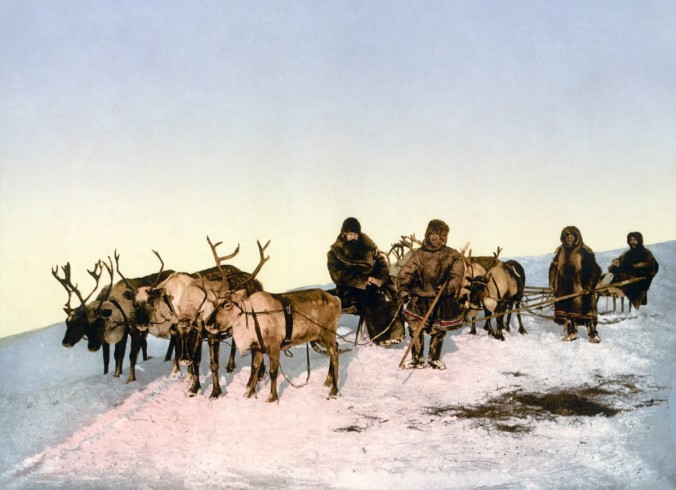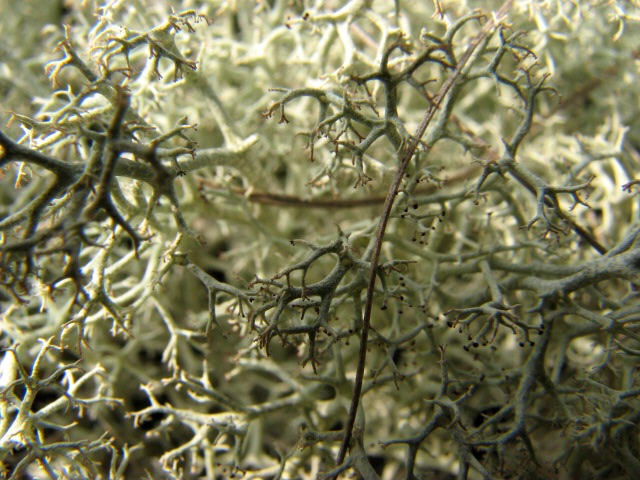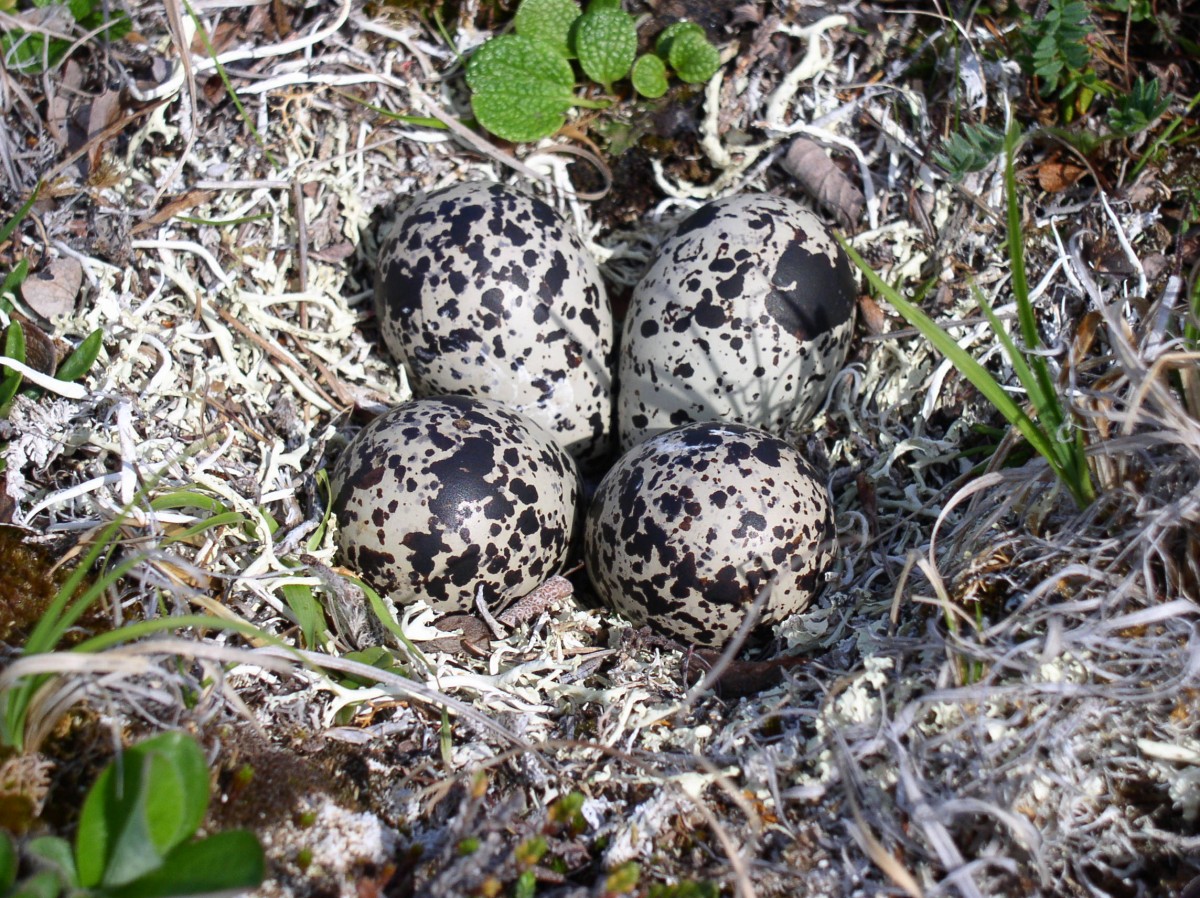“Reindeer lichen? I love reindeer!” This was the common response to telling people I was researching reindeer lichen restoration. The majority of studies on reindeer lichen seem to be from Northern European countries. I found a clear correlation between reindeer herding territory and the places research was being conducted. Most people know or could guess that reindeer and reindeer lichen have a link, but that seems to be as far as the common knowledge goes. I was curious about the intricacies of the link, as well as what we can learn from the research of scientists and knowledge or reindeer herders and take back to the prairies of Washington.
Reindeer lichen are found all around the world in coastal sands, peat bogs, prairies and boreal forests. They are particularly prolific in boreal forests, attaining a ground cover of over 90% in some locations (Smith et al., 2012.) Although widespread, reindeer lichen are of particular importance in Fennoscandia (Finland, Norway, Sweden, and part of Russia), where they are an important food source for reindeer, hence the common name reindeer lichen. These lichen are an important commodity for the reindeer herders, who rely on the large mats of lichen as a good portion of the reindeer’s diet.
Reindeer are an important species in Fennoscandia, where nearly 40% of the total land area is used as reindeer pasture. The indigenous Sami reindeer herders have economic and cultural ties to herding reindeer for meat and hides. The amount of available herding land is shrinking as grazing lands are being encroached upon by development and forestry and reindeer herd numbers are growing to support herding families. (Pekkarinen et al., 2015.)
The reindeer graze on lichen in the winter months when little else is available to eat. When lichen populations dwindle due to over-grazing or habitat loss, supplementary feeding is needed, making the lack of lichen a major economic hit to the reindeer herders.
“Domesticated reindeer herding makes up an important part of the socio-economic lifestyle of the indigenous people in the northern regions of the world” (Swanson 1992.)
Many studies have been conducted examining aspects of lichen populations (grazing impacts, transplantation) around Fennoscandia (See Kumplula et al. 2014, Virtala 1992) because of the economic impact of lichen and cultural ties to herding. Reindeer optimization models have been suggested (Virtala 1992) where the ideal lichen harvest is found so that the lichen mats will sustain. When the optimal number or reindeer to land is found, the reindeer can actually increase lichen mats by trampling and fragmentation (Duncan 2015) but too much grazing and the lichen mats decrease in productivity (Gaare and Skogland, 1980.) However, with increasing numbers of reindeer, decreasing grazing is a tricky thing.
The South Puget Sound Prairies are far from the tundra, and we also lack reindeer, but this is part of what makes the reindeer lichens at the prairie so unique. The prairies are a unique and special ecosystem and lichens are a part of. Lichens are rare in inland valley habitats (Smith et al., 2015) adding diversity and rarity to the Mima Mounds ecosystem.
The reindeer/reindeer lichen link is perhaps the best known animal-lichen interaction. Although the Mima Mounds lack caribou or reindeer, the reindeer lichens are available forage in the winter months when little else is available or abundant. Lichens are also known to be used by birds for nests (Sharnoff et al., 1998.) Because the spotlight has not been on the lichen at Mima Mounds thus far, it is possible that the lichens in the South Puget Sound Prairies play undocumented/unobserved roles in the ecosystem.
Lichen restoration research is successful and supported in Fennoscandia because reindeer lichens play such an important role in the economy and culture there. There is incentive to save the lichens, one that we lack at the South Puget Sound Prairies. We need to create incentive by increasing appreciation for the lichens. They may not play a huge economic role, or even a cultural role, but they are a part of a beautiful unique ecosystem. Rare species should be preserved, as they play a role in the larger unique ecosystem (Smith et al., 2012.) The implementation of educational programs can play a huge role in increasing awareness and importance of the reindeer lichens.
We can take findings from previous lichen studies around the world and apply them to the prairie. One study takes on a reproduction strategy for reindeer lichens that relies on fragmentation and dispersal over short distances that mimics caribou trampling and grazing (Duncan 2015.) Another study mixes lichen mats with humus and mineral soil to more quickly re-establish the lichen (Roturier 2009.) Previous blog posts have outlined and referenced numerous studies on lichen restoration as well. (Links to blog posts)-ask me for tips
We have many studies to look at as a starting point for lichen restoration, and eventually I believe a successful reindeer lichen restoration plan can be made that is specifically tailored to the South Puget Sound Prairies. First, we need to make people care.
Literature Cited
Duncan S. J. 2015. Woodland Caribou Alpine Range Restoration. Ecological Restoration 33: 22-29.
Gaare, E. & T. Skogland. 1980. Lichen- reindeer interaction studied in a simple case model. Trondheim Part A: 45-56.
Kumpula, J., Tahvonen, O., & A. J. Pekkarinen. 2014. Optimal harvesting of an age-structured two-sex herbivore-plant system. Ecological Modelling 272, 348–361.
Smith R. D. et al. 2012. Rare Inland Reindeer Lichens at Mima Mounds in Southwest Washington State. North American Fungi 7: 1-25.
Pekkarinen A. J. & J. Kumpula. 2015. Reindeer Management and Winter Pastures in the Presence of Supplementary Feeding and Government Subsidies. Ecological Modelling 312: 256-271.
Roturier S. 2009. Managing Reindeer Lichen During Forest Regeneration Procedures. Doctoral Thesis, Swedish University of Agricultural Sciences.
Sharnoff S. & R. Rosentreter. 1998. Lichen Use By Wildlife in North America. Lichens of North America Information.
Swanson D. J. 1992. Reindeer Herding in the Northeastern USSR. Society for Range Management 14: 97-99.
Virtala, M. 1992. Optimal management of a plant-herbivore system – Lichen and Reindeer in Northern Finland. Ecological Modelling 60 (3-4), 233–255.





March 15, 2016 at 6:11 pm
What’s up, just wanted to tell you, I liked this post.
It was practical. Keep on posting!